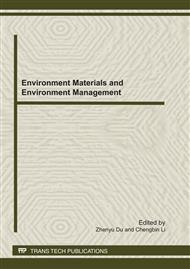p.276
p.280
p.286
p.291
p.296
p.301
p.305
p.309
p.313
Adsorption of Chlorimuron-Ethyl on Two Typical Chinese Soils as Affected by Cd
Abstract:
Coexistence of chlorimuron-ethyl and Cd is very common in Chinese soils. Adsorption of chlorimuron-ethyl and Cd on soils strongly affects their mobility. This study was conducted to investigate the effect of Cd on the adsorption of chlorimuron-ethyl on two typical Chinese soils, brown earth (BE) and black soil (BS). Batch equilibration methods were applied. The presence of Cd enhanced the adsorption of chlorimuron-ethyl on BE and BS, which resulted from the decrease of equilibrium solution pH caused by Cd2+ exchange with H+ ions of soil surface. Besides that, chlorimuron-ethyl adsorption possibly takes place on sites where Cd was previously adsorbed and the adsorbed Cd acted as a bridge between the soil and chlorimuron-ethyl. Such results suggested that Cd in field may decrease the mobility and bioavailability of chlorimuron-ethyl and correspondingly decrease its environmental risk.
Info:
Periodical:
Pages:
296-300
Citation:
Online since:
July 2011
Authors:
Keywords:
Price:
Сopyright:
© 2011 Trans Tech Publications Ltd. All Rights Reserved
Share:
Citation:


